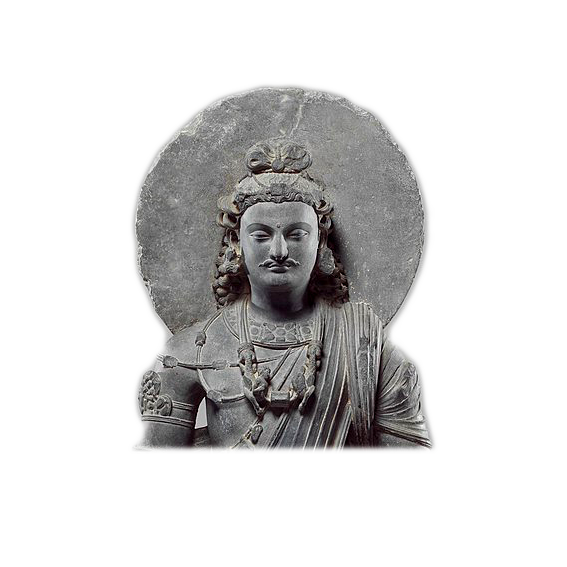
Maitreya
- One of the founders of the Jonang dharma. Maitreya Bodhisattva’s teachings have had a profound influence on the Jonang dharma.
Maitreya’s Five Treatises
- Jonang Dharma literature often cites these five treatises, but their English and Chinese translations contain some critical misinterpretations. Therefore, in order to properly understand the Jonang Dharma and explain the critical points, we will provide each treatise’s parallel comparisons of Sanskrit, Tibetan, Chinese, English and other languages. We will upload the comparison files for download when they become available.
Maitreya’ Introduction
The Sanskrit epithet Maitreya, or “The Benevolent One” (Pali Metteya; Sinhala Maitrī; Tib. Byam-pa = Jam-pa; Ch. Mi-le; Kor. Mireuk; Japan. Miroku), refers to the next Buddha of our world, perhaps the most protean figure in the Buddhist pantheon. Revered both as a bodhisattva and a buddha, he is encountered across virtually all of Asia, appearing in various forms, always with benevolence, to meet the needs and expectations of Buddhists of widely divergent cultures.
It is thus hardly surprising that he appears as such a multivalent figure in Buddhist literature, cult practice, and art. Whether depicted standing or, more often, sitting “Western style” on a throne-like chair with legs pendent and ankles sometimes crossed, he presents a pose strikingly different from the more typical images of Buddhist iconography.
While his characterization, his role, and his popularity as a cult figure have varied, sometimes significantly, from text to text, culture to culture, and century to century, his basic position in the Buddhist pantheon throughout the history of the tradition was consistently anchored in his identification as the anticipated successor to Śākyamuni, the historical Buddha of this world system.
He is thus anomalously imagined and venerated in some instances as Maitreya Bodhisattva in his role as “Buddha-to-be,” currently residing in the Tuṣita Heaven, and in other contexts as Maitreya Buddha, in anticipation of his eventual rebirth as the next Buddha for this world system.
He thus becomes the focus of a pan-Asian devotional cult in which aspirants seek in their next rebirth to join him in the Tuṣita Heaven to await subsequent rebirth later on earth at the time he assumes his role as the next Buddha. A major theme in all traditions of Buddhist art, he is also credited as the divine inspiration for and, according to some accounts, even as the heavenly author of key philosophical works of the Yogācāra school.
In other parts of tradition, he appears in quite a different guise as the focus of popular millenarian movements, sometimes expressing purely spiritual aspirations, but often also advocating an explicit politically revolutionary agenda. Over the last century, moreover, a scholarly controversy has emerged around the question of whether his legend is of purely South Asian origin or whether it might represent the Buddhist assimilation of Central Asian messianic motifs associated with the Indo-Greek Mithra and the Zorastrian Saošyant.
.
(Oxford Biographies)
